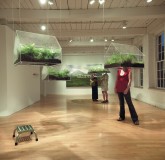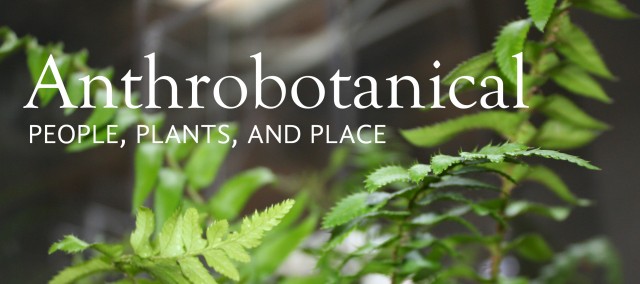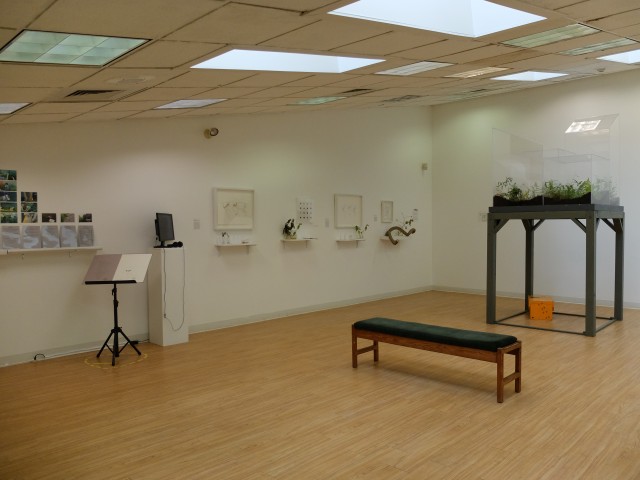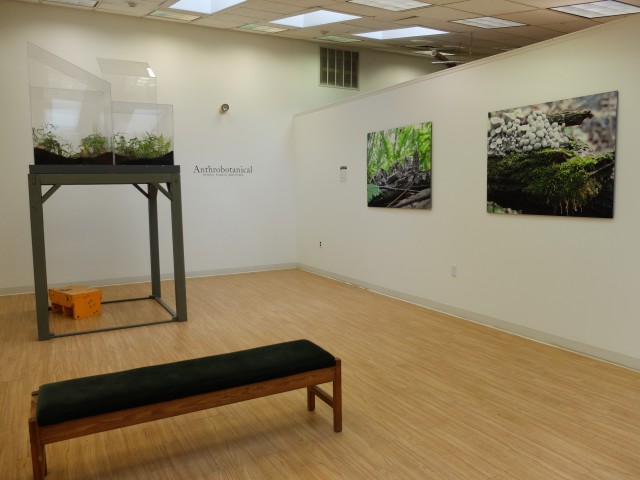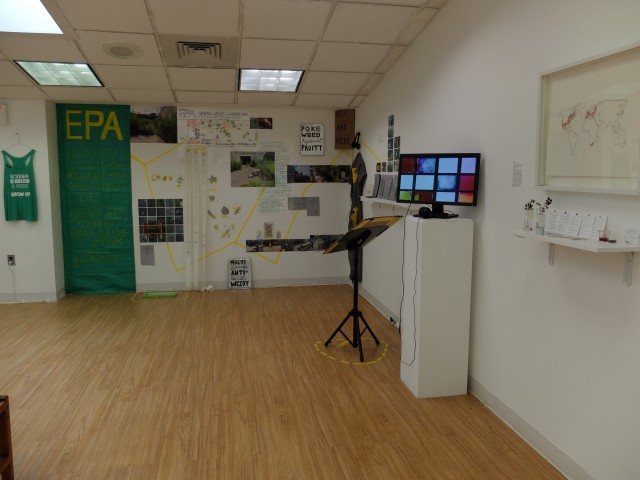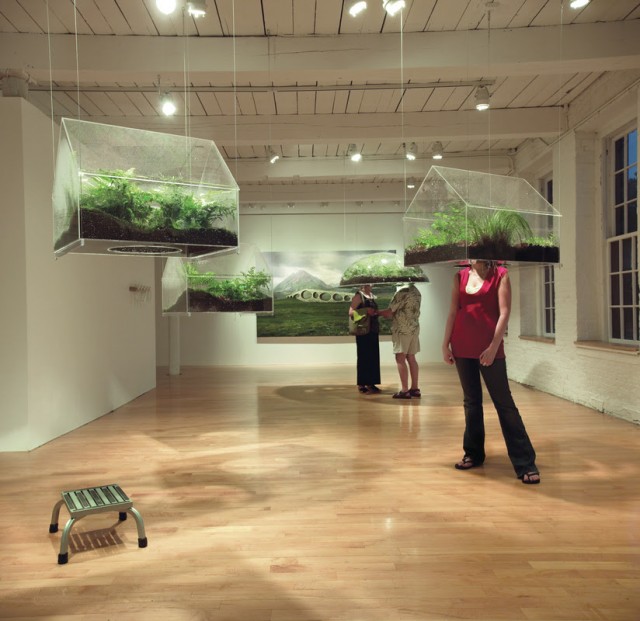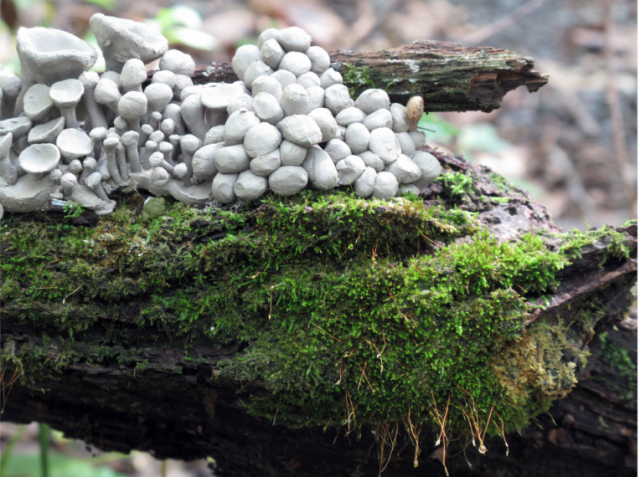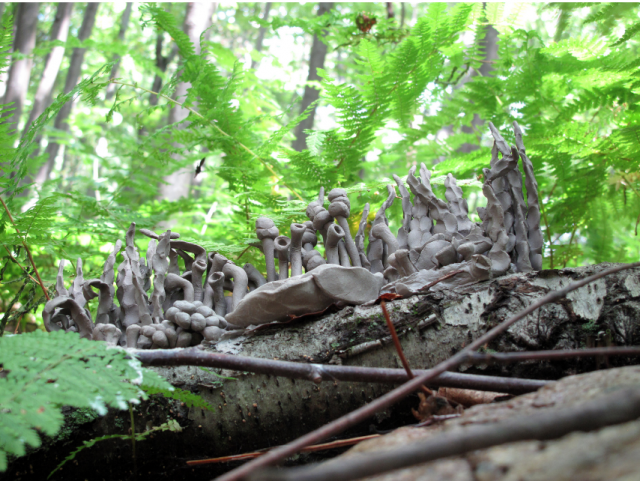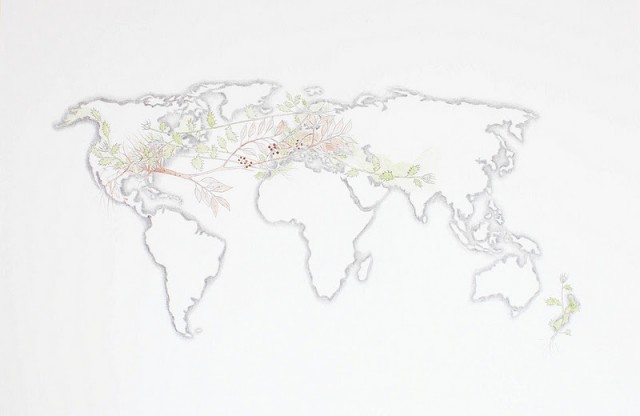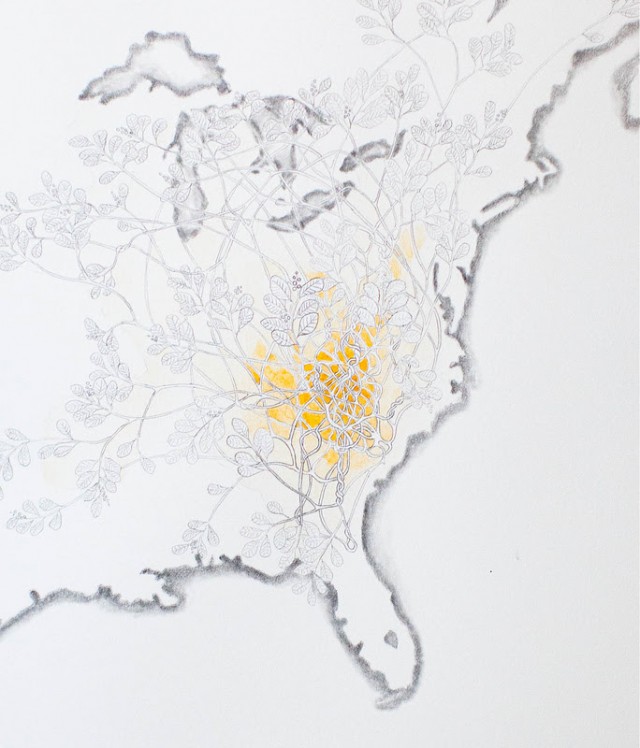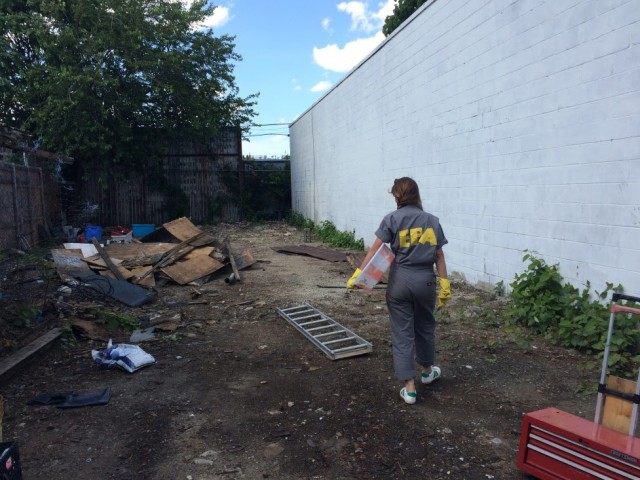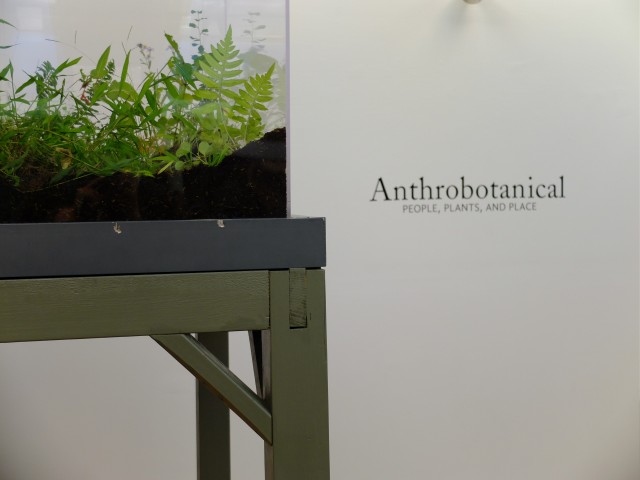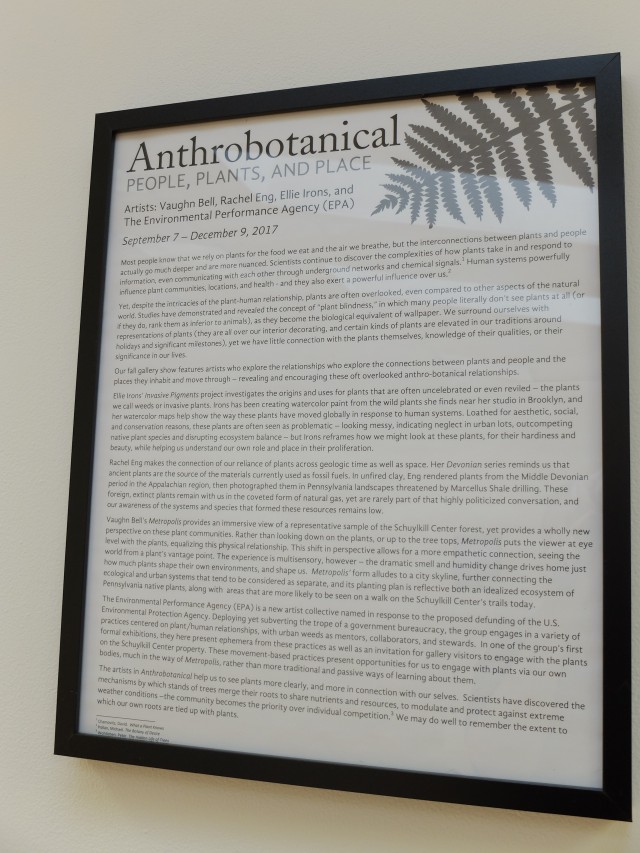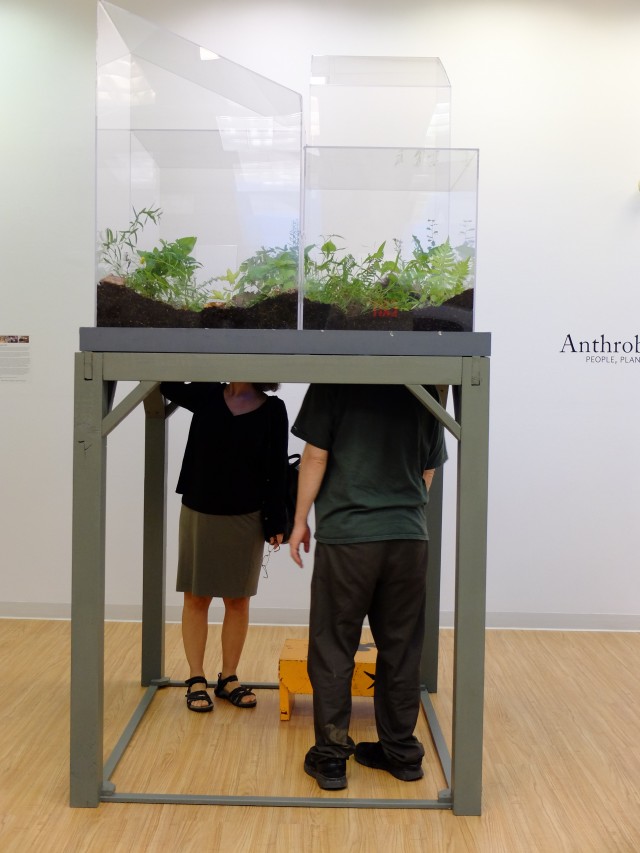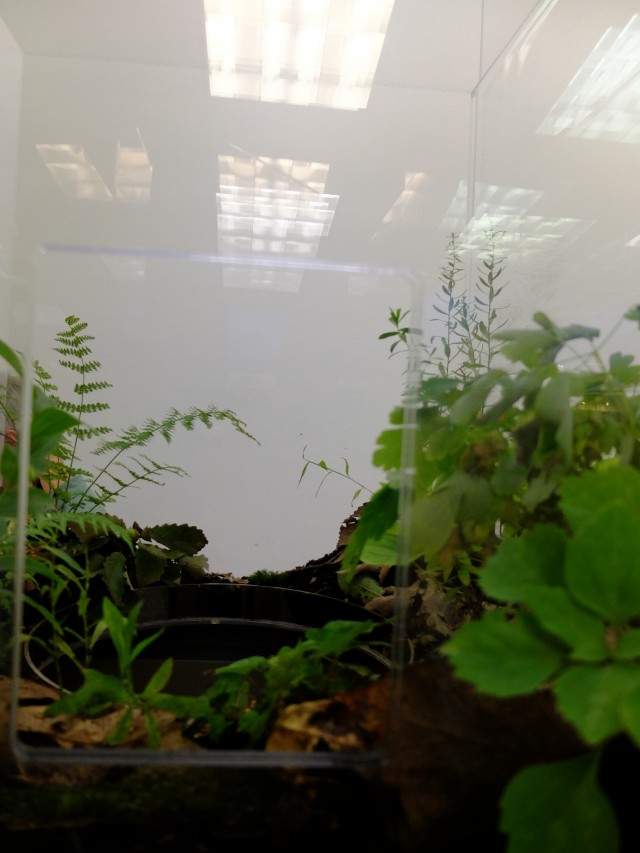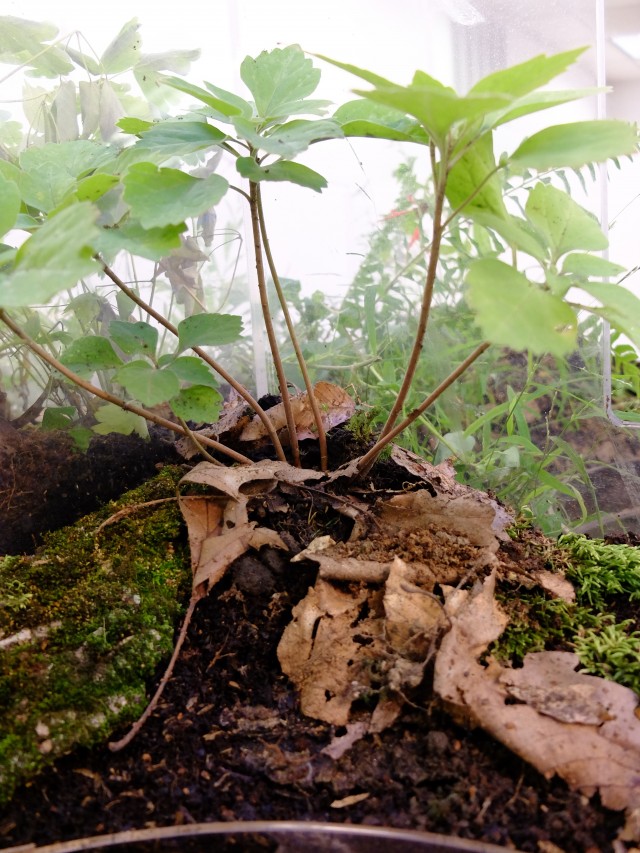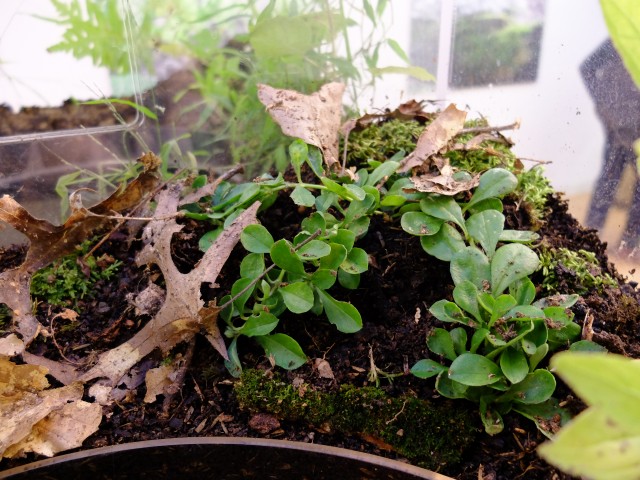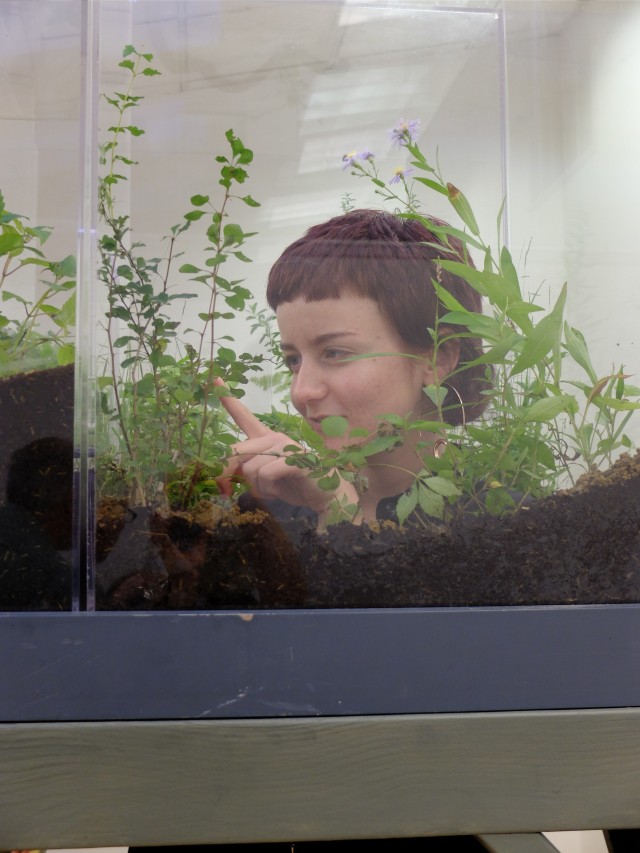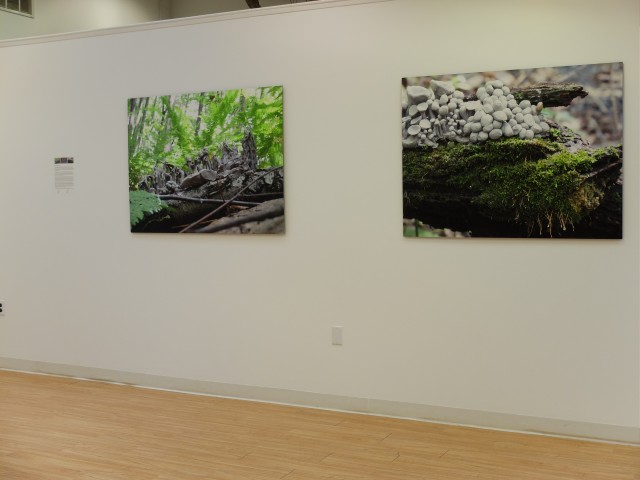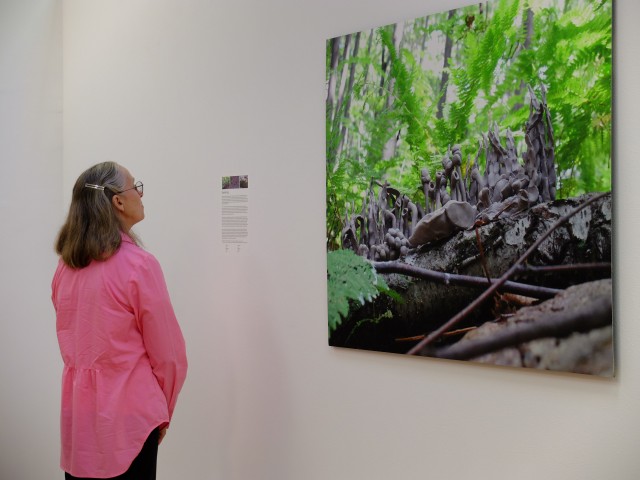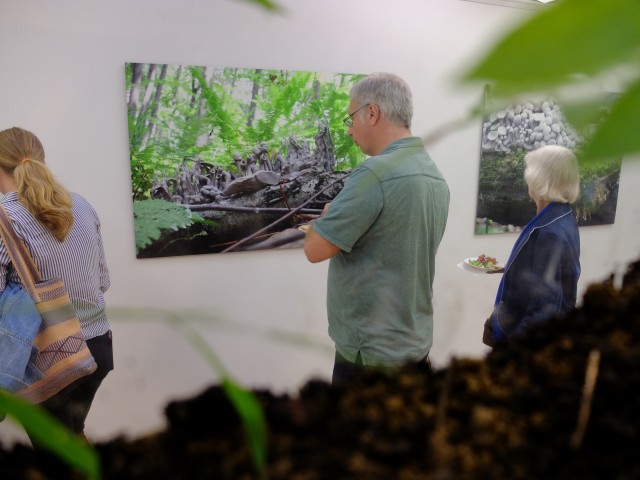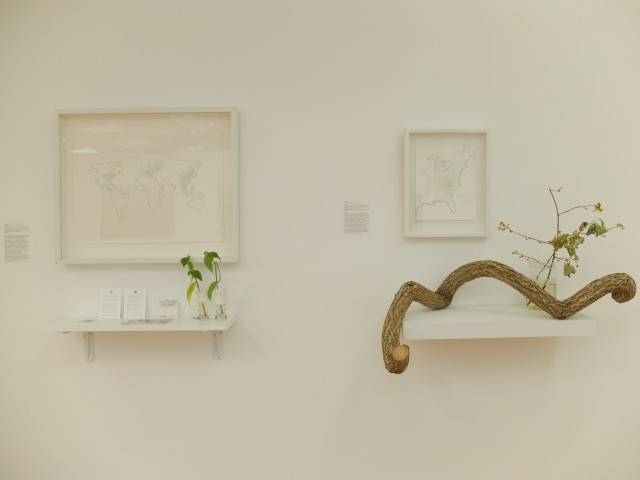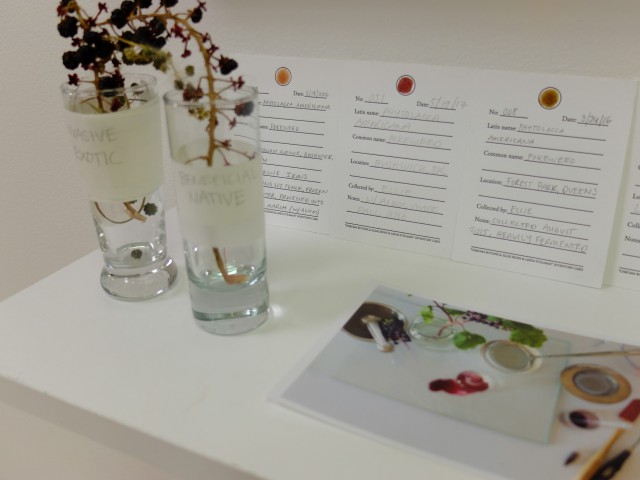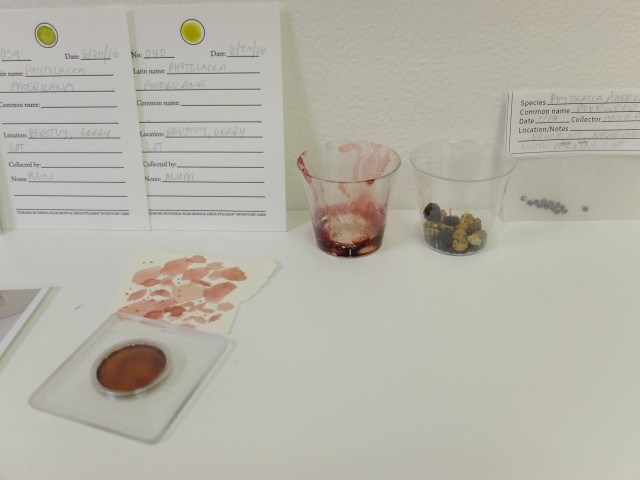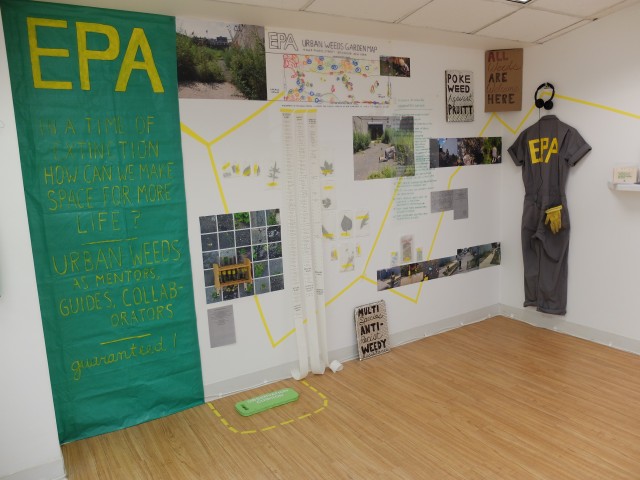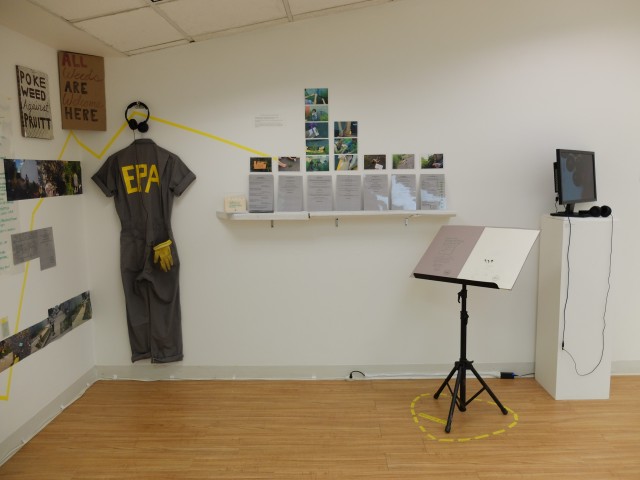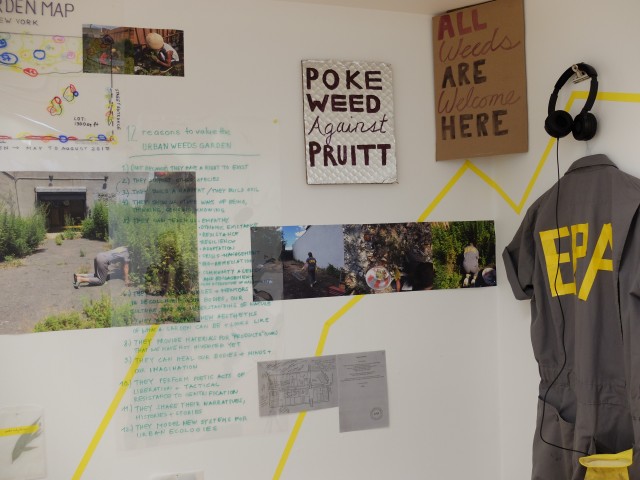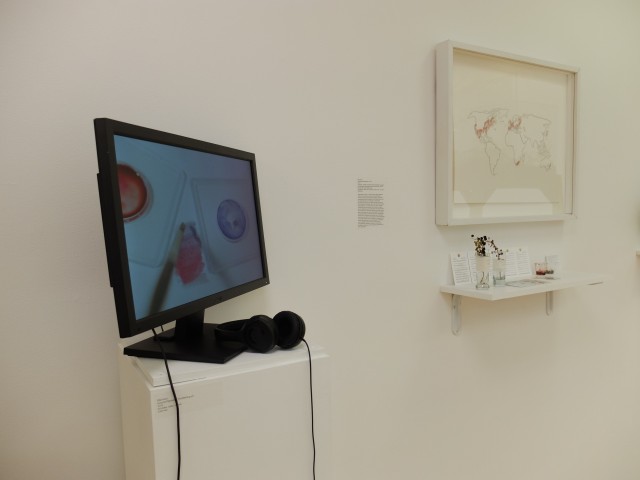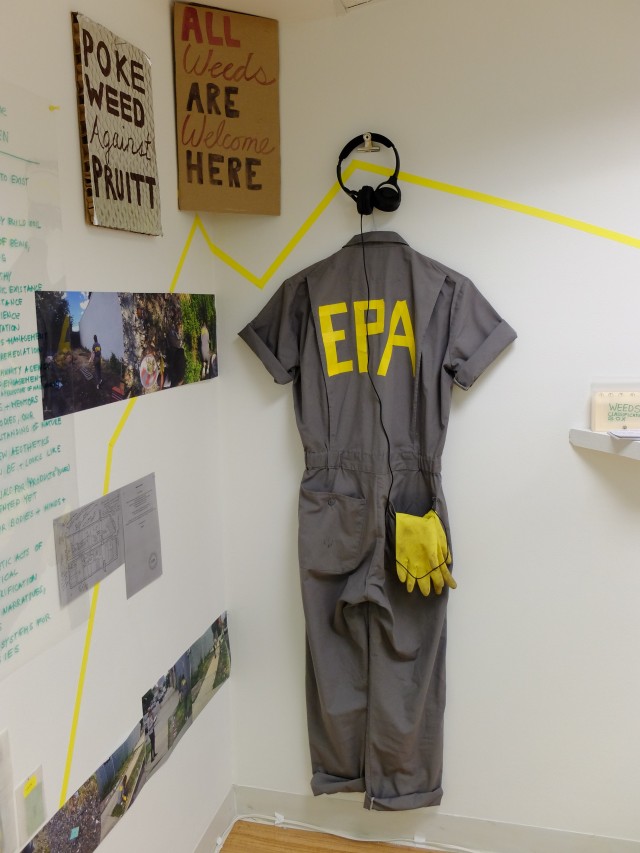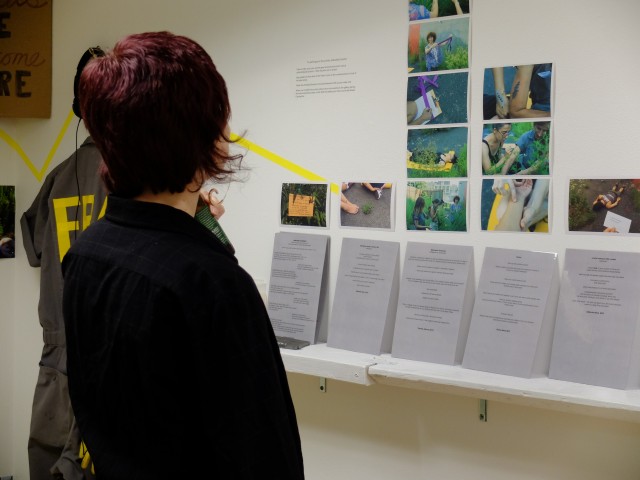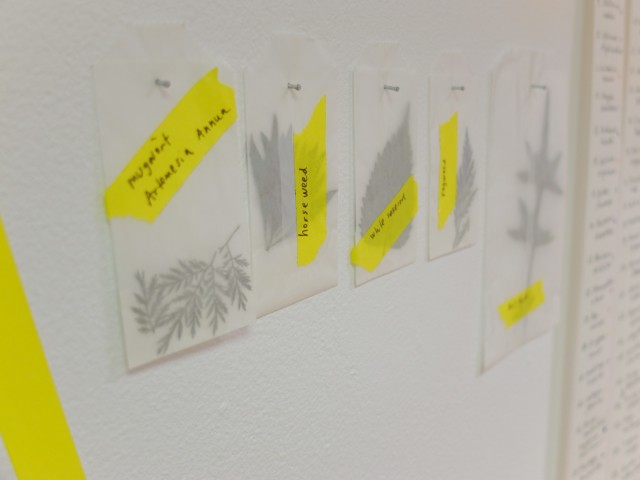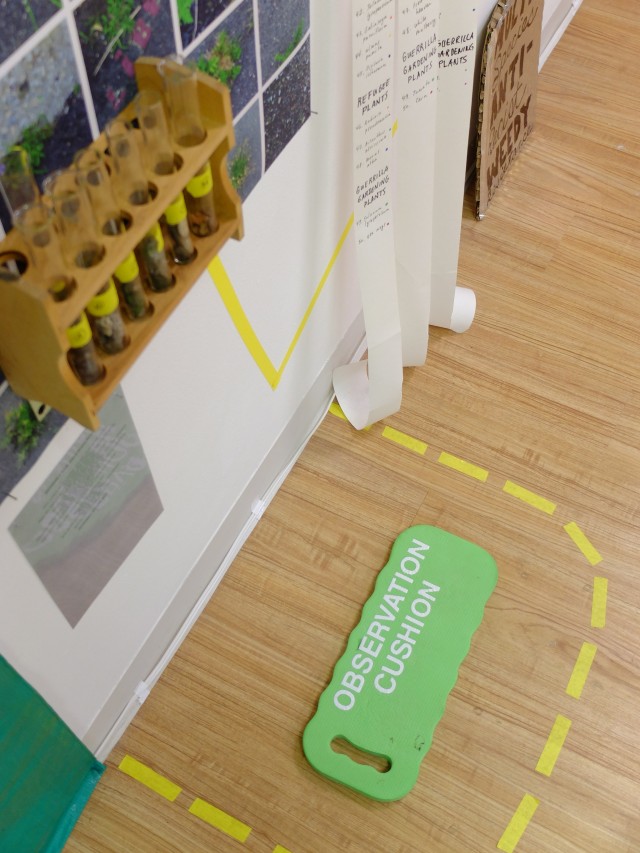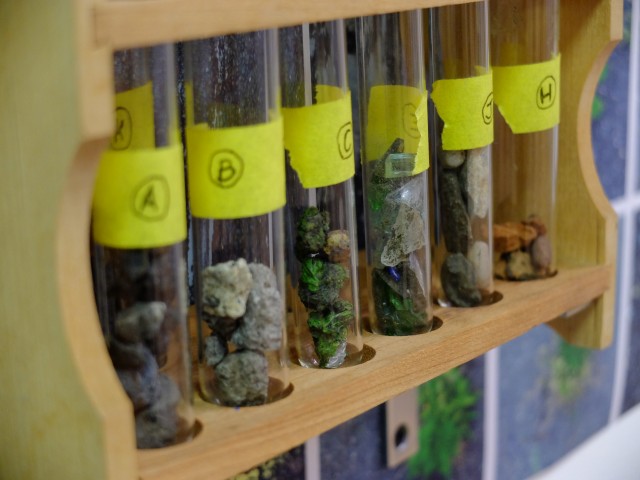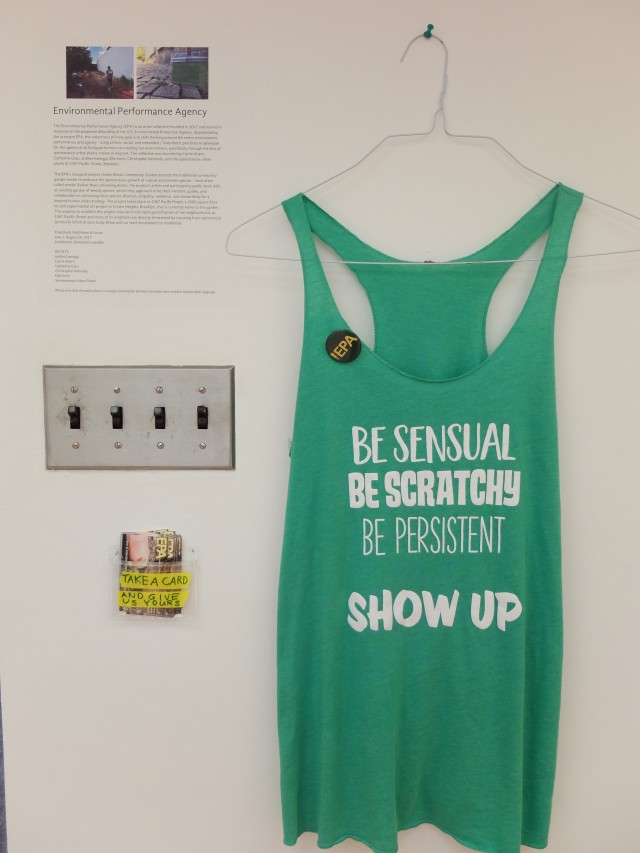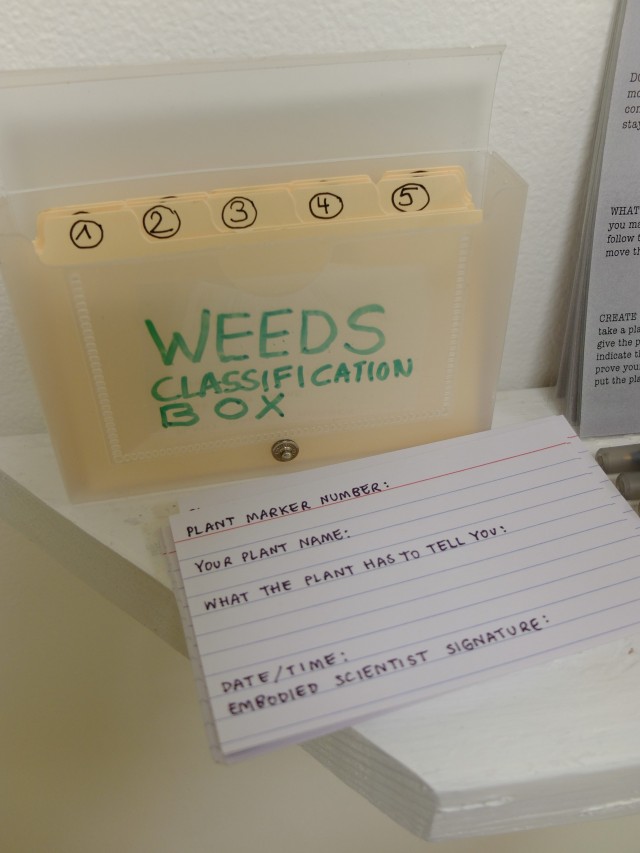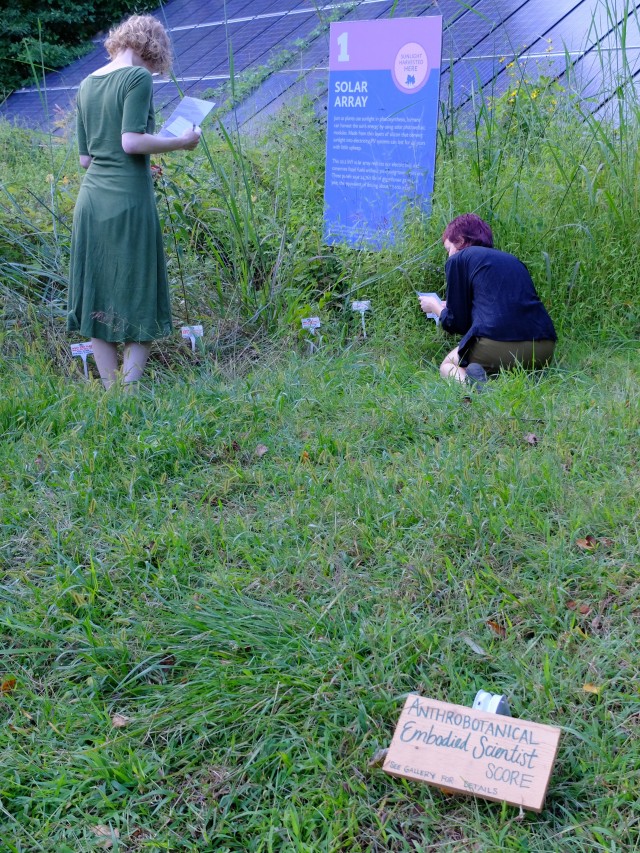People, Plants, & Place
In the gallery
September – December 2017
Most people know that we rely on plants for the food we eat and the air we breathe, but the interconnections between plants and people actually go much deeper and are more nuanced. Scientists continue to discover the complexities of how plants take in and respond to information, even communicating with each other through underground networks and chemical signals. Human systems powerfully influence plant communities, locations, and health – and they also exert a powerful influence over us. Yet, despite the intricacies of the plant-human relationship, plants are often overlooked, even compared to other aspects of the natural world.
An opening reception took place on September 7, 2017 and this exhibition was on view in our gallery until December 2017.
Artists:
Vaughn Bell
Vaughn Bell is interested in our sense of visceral connection to our surroundings and the materiality of environment: plants, soil, water, concrete, steel, plastic. Bell asks how we humans relate through body and senses to our places and to each other, and what our responsibilities are to these ecologies. Bell is inspired by moments of absurdity and contradiction, possibility and paradox. The work evolves from the notion that the viewer is a participant, either immersed in a physical space or involved with the work through actions and interactions. It invites people to step inside, be surrounded, hold something in their hands, make a commitment.
Bio:
Vaughn Bell creates public artworks and also teaches and consults on topics related to public and environmental art. Her work has been widely exhibited both nationally and internationally. Vaughn has created commissions for Massachusetts Museum of Contemporary Art, the Edith Russ Site for New Media Art in Oldenburg, Germany, and the Brightwater Wastewater Treatment Plant in King County, WA, among others. Her work has been featured in Artnews, Afterimage, and Arcade Journal as well as numerous other publications. It was featured in The New Earthwork: Art Action Agency, from ISC Press and Art and Ecology Now by Andrew Brown (Thames and Hudson). Awards and fellowships include the Nancy Graves fellowship at the Millay Colony for the Arts, Virginia Center for Creative Arts, Vermont Studio Center, 4Culture special projects grants, Kamiyama Japan International Artist in Residence, and Artist in Research at the Berwick Research Institute. Vaughn has recently been working as artist in residence, writing a Public Art Master Plan for Seattle Public Utilities Drainage and Wastewater. Vaughn studied at Massachusetts College of Art and Design and at Brown University. She was born in Syracuse, NY, grew up there and in Virginia, and currently lives and works in Seattle, WA, USA.
Rachel Eng
Rachel Eng is interested in the parts necessary to a whole. The aggregates and accumulations of many small forms that becomes monumental together. A raindrop, a grain of sand, and a microscopic bacterium may go unnoticed, along with a feral cat, a person in prayer or a protestor when they are a single unit. But when gathered together they have a great impact. This micro and macro relationship relates to multiple structures of social and biological life. Eng finds herself viewing these relationships in layers that continuously build and unfold, sometimes infinitely and cyclically at other moments. She works to physically manifest these layers through repetitive patterns and the use of multiple elements to create complex visual and textural experiences.
The duality of control and the uncontrollable/unpredictable in life is present in many of her works. She considers this in the balance between our action on our planet and the wildness of nature and climate. She equates it also to ‘not-knowing’ and the unanswerable questions she grapples with in regards to origin, cycles, and awareness.
Bio:
Rachel Eng grew up exploring the deciduous forests of Rochester, NY and her fascination with the natural world continues today. Drawing upon the ephemeral and immortal qualities of clay, her work considers aspects of the controlled and unpredictable in relation to our changing environment. Her work often employs repetitive patterns and the use of multiple elements to create complex visual and textural experiences. “I have yet to completely understand where my predilection for the repetitive stems from, but it is always present in my work. The process of making many small parts has become meditative, the way to work through unattainable knowledge or obsessive memories.” Eng received her B.F.A. from Pennsylvania State University and her M.F.A. from the University of Colorado at Boulder.
Ellie Irons
Ellie Irons is an interdisciplinary artist making work that ranges across media, from drawing to video to to site-responsive public projects. Regardless of medium, she engages the interplay between humanity and ecology, exploring what it means to be alive in the advent of the Anthropocene. As a young adult, she studied environmental science and fell in love with biology field work. As her practice developed, she began to integrate science and art. She now works in a hybrid format, splitting her time between the lab, the field and the studio. She is interested in creating work that reveals how humans are embedded in ecological systems rather than distinct from them. This interest leads her to a site-responsive practice. Working in the tradition of pioneers like Robert Smithson and Helen and Newton Harrison, she investigates her local habitat, be it a suburban wasteland, urban waterway or old growth forest. She seeks out structures that tie that habitat to larger ecologies, and exposes those ties for viewers to explore. While she is inspired by data and observation, she also wants her work to suggest the sense of wonder she derive from these intricate, constantly transforming systems. She uses the tools at her disposal, from paint to dirt to WIFI, to reconsider our long held notions of nature. Her videos speculate on the beauty and inevitability of ecological processes in highly anthropogenic settings, while her public projects ask viewers to confront the biological systems functioning under, around and within them. Project by project, she seeks to reframe nature as ecology, locating humans in an all encompassing, inescapable network of melting ice, shifting populations and evolving technology. For her, this is a contemporary notion of the sublime that demands to be acknowledged and explored.
Bio:
Ellie Irons is an artist and educator based in Brooklyn, NY. She works in a variety of media, from walks to WIFI, to reveal how human and nonhuman lives intertwine with other earth systems. Recently she has been in residence at the Rocky Mountain Biological Laboratory, the Headlands Center and the SVA Nature Lab. Her work has been part of recent group exhibitions exploring contemporary environmental issues, including Social Ecologies, Emergent Ecologies, and the ongoing Chance Ecologies project. Recent exhibition venues include The Queens Museum, Arsenal Gallery in Central Park, Pratt Manhattan Gallery and William Paterson University. Her writing has appeared in Temporary Art Review, The Brooklyn Rail and Landscape Architecture Futures. She is a 2015 NYFA Fellowship recipient and a 2015 Turbulence Commission grantee. She studied Environmental Science and Art at Scripps College and received her MFA from Hunter College, CUNY.
The Environmental Performance Agency (EPA)
The Environmental Performance Agency (EPA) is an artist collective founded in 2017 and named in response to the proposed defunding of the U.S. Environmental Protection Agency. Appropriating the acronym EPA, the collective’s primary goal is to shift thinking around the terms environment, performance, and agency – using artistic, social, and embodied / kinesthetic practices to advocate for the agency of all living performers co-creating our environment, specifically through the lens of spontaneous urban plants, native or migrant. The collective was founded by Carrie Ahern, Catherine Grau, andrea haenggi, Ellie Irons, Christopher Kennedy, and the spontaneous urban plants of 1067 Pacific Street, Brooklyn.
The EPA’s inaugural project Urban Weeds Community Garden extends the traditional community garden model to embrace the spontaneous growth of ruderal and pioneer species – most often called weeds. Rather than cultivating plants, the project’s artists and participating public work with an existing garden of weedy species, which they approach to be their mentors, guides, and collaborators in cultivating inter-species alliances, empathy, resilience, and stewardship for a beyond-human urban ecology. The project takes place at 1067 PacificPeople, a 2500 square-foot lot and experimental art project in Crown Heights, Brooklyn, that is currently home to the garden. The urgency to establish this project now lies in the rapid gentrification of the neighborhood, as 1067 Pacific Street and many of its neighbors are directly threatened by rezoning from commercial (primarily informal auto-body shops and car wash businesses) to residential.
The Environmental Performance Agency (EPA) artist collective was founded in 2017 by Carrie Ahern, Catherine Grau, andrea haenggi, Ellie Irons, Christopher Kennedy, and the spontaneous urban plants of 1067 Pacific Street – all of whom have worked together in various constellations over the past two – four years.
Christened an ‘anarchist j’ouvert laboratory’ by one of its participants, 1067 PacificPeople is a safe space for movement and live-performance experimentation in Crown Heights, Brooklyn. 1067 PacificPeople is as well a 5-year movement – based project by artist, choreographer and performer andrea haenggi that focus on the relationship between people and the urban wild plants often called weeds. It focuses on social justice and community. Carrie Ahern has been an active co-producer of the project since 2015. Ellie Irons, Christopher Kennedy and Catherine Grau have been participating artists of the project since 2015 / 2016. As of 2017 the newly formed EPA artist collective is working to produce the Urban Weeds Community Garden at 1067 Pacific Street, Brooklyn.
The residency of spontaneous urban plants at 1067 PacificPeople has developed into a diverse and growing community of ~40 (identified) spontaneous urban plant species, composed of plants such as: Artemisia vulgaris, Lepidium virginicum, Taraxacum officials, Symphyotrichum ericoides, Humulus japonicus, Bidens fronds, Chenopodium album, Solanum nigrum, Setaria viridis, Artemisia annual, Persicaria maculosa, Paulownia tomentosa, and more.

